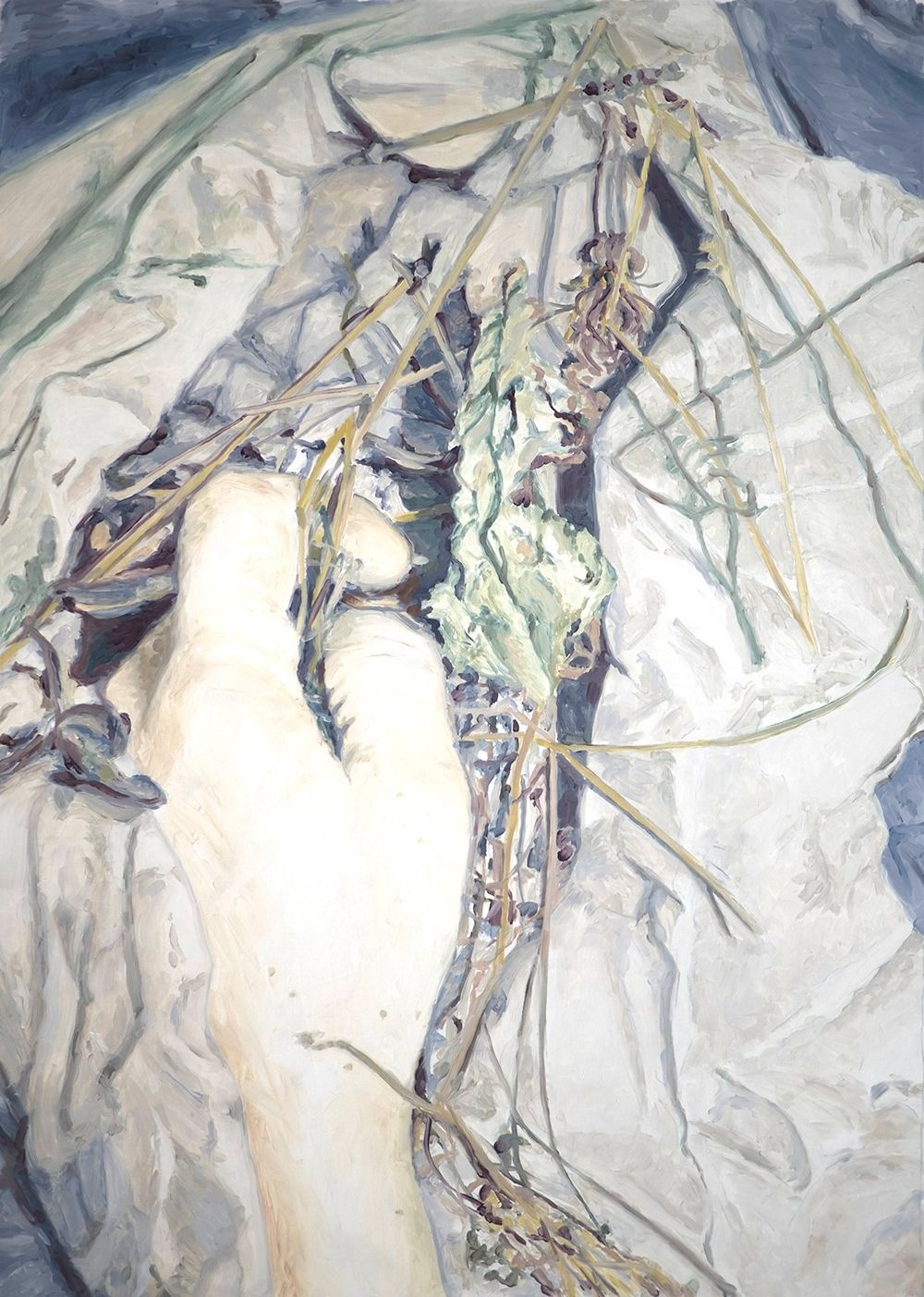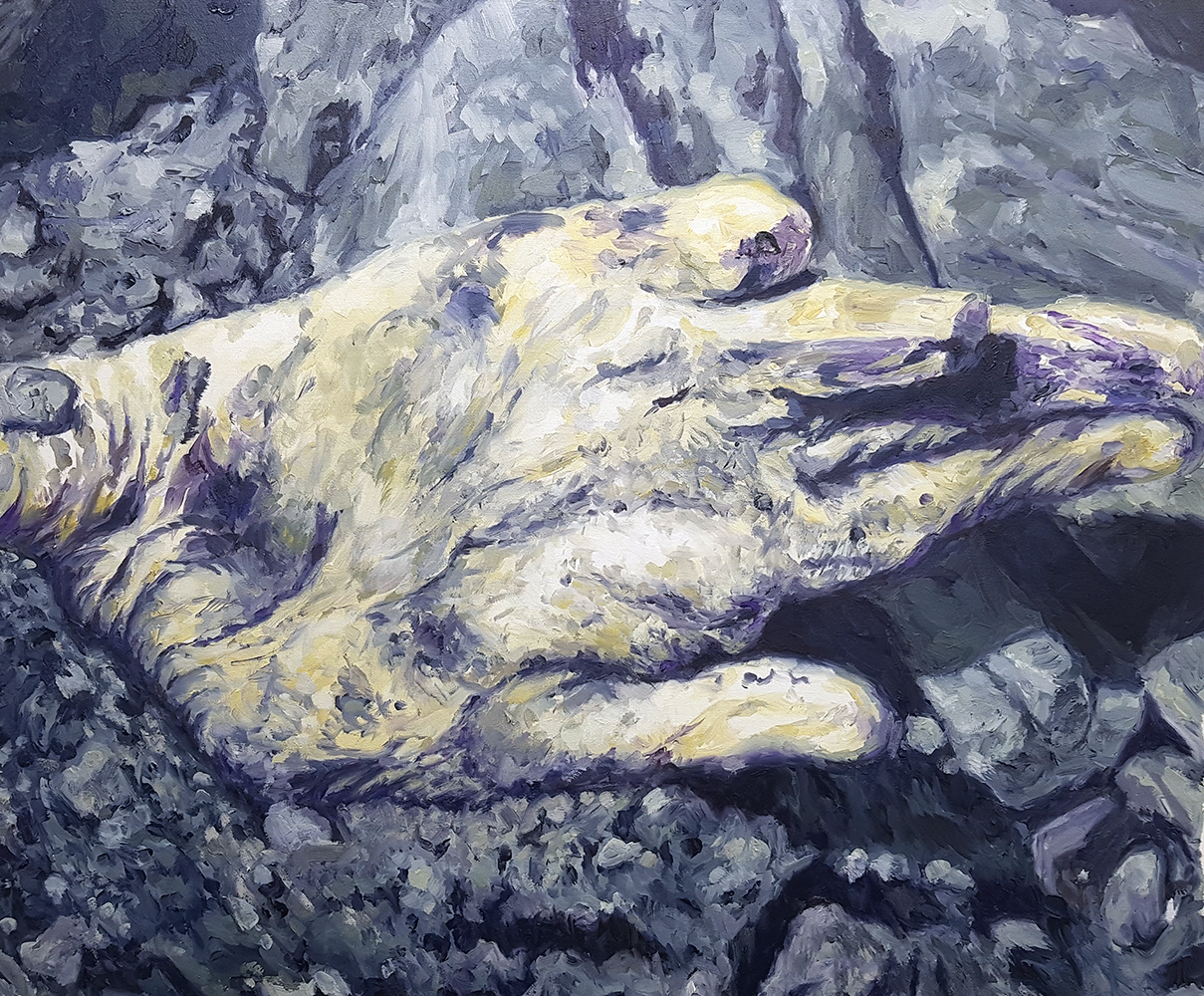zero-point/null-point: Marcelo Guarnieri Gallery, São Paulo (2021).
If we were to carry out a brief genealogy of the crisis of perception that afflicts us, we could choose as a starting point some specific moments. The first of these would be modernity, which founded Western reason based on an armored sensibility for which the phenomena of the world should be disregarded in favor of a purely mental elaboration. The dilution of the external world in cognitive states (inherited from Cartesian philosophy) bequeathed an impoverished experience of the "real". The modern subject forges a body impermeable to the senses, thus divorcing itself from the external environment. The second stage of this brief genealogy would be composed of a pair of events: the appearance of big cities and the advent of technical reproducibility in the passage from the 19th to the 20th century. The accelerated temporality of the metropolis and the excess of visual stimuli provided by the reproduction of images established a series of mechanisms that would numb the organism, cloud the gaze, repress memory: the cognitive system of synesthesia - which encompasses not only sight, but also taste, touch, hearing, and smell - would become, rather, one of anesthesia 1 . Now, those who read this text know well how this scenario is accentuated in the 21st century in the midst of a daily life in which we distance ourselves from sensible reality, as we inhabit, most of the time, digital zones whose screens flood our retinas with a vertiginous quantity of stimuli.
Victor Mattina's exhibition dot-zero/point-nil critically and poetically targets this context. Both the set of paintings and the audiovisual installation presented at Galeria Marcelo Guarnieri have as background a dialogue with this crisis that, being more rigorous, goes beyond the sphere of perception. It is not only a question of a stifling of the gaze, or even of a narrowing of our synesthetic link with the surroundings. In the limit, this crisis that begins in perception ends up blocking all kinds of imagination, threatening the place of our psychic constitution and generating an immense passivity in the midst of generalized restlessness. For, let's be direct, this state of numbness, of constant attention deficit in a 24/7 world, is nothing more than a state necessary for social control. The anesthesia is not individual, it is collective, not involuntary, but programmed. After all, when reality itself is transformed into a narcotic, torpor becomes the norm. In this sense, we can affirm that all Mattina's works gathered here, in their own way, without fanfare, without direct narratives, transit through a central territory of today's political life.
Let's pause to get a little closer to the works on display. The use of subdued tones, which do not correspond to the saturation of colors that the human eye is conditioned to associate with the objects around it, causes a first strangeness, amplified by the titles that refer to different areas of knowledge, such as botany and entomology, human anatomy, modern medicine, and medieval European culture. Throughout the paintings, fragments of animal and vegetable bodies are portrayed in unusual frames, composing situations that disconcert the eye. They attract and repel, at the same time. Take, for example, Ispariz (2020). The title, linked to the Ignota Language created by Hildegard von Bingen (1098-1179) 2 , denotes spirit (spiritus). Here, Mattina forms a kind of sardonic short-circuit by superimposing a metaphysical and supernatural idea onto the somewhat distorted representation of a bouquet of flowers inside a garbage can. Already in Ether (2020), whose title evokes the chemical substance that worked as an anesthetic in medicine, we witness feet elevated around what appears to be an operating table. Thus we are given to see the figurative meaning of the word "ethereal", as that which is suspended in the air. There is also in this painting a game of association between the drawing of the chemical formula of ether and the way the feet are arranged in relation to the hospital table.
These very brief examples reveal the polysemy contained in the paintings brought together. Polysemy, or multiplicity of meanings within the same work, whose place in the world is not a docile, transparent, quickly grasped locus. On the contrary, through a pictorial language affiliated with opacity, Mattina seeks to disturb the contemporary subject's sensory system, increasingly blunted by imagery saturation. What is unique about his production is that it is not about understanding how to circumvent this state of anesthesia of the senses and thus, utopically, escape from the sensory fatigue that afflicts us. On the contrary, the idea that guides his poetic program is to overcome the safety mechanism of an always armored gaze so that we can relate directly to the exhaustion that characterizes the current experience. Only by voluntarily reaching this kind of point-null can we, perhaps, recover some living link with the real in a time when reality seems to have become an endless feed of narcotic stimuli - or the other way around, the phantasmagoria of digital images seems to have assumed the position of objective reality.
This is why all the works of point-zero/point-nil address themselves insubmissively to the gaze, forging a constant character of obstacle. To this end, they assert the power of the opaque, of the interruption, of strangeness, in the place of transparency, of automatism, of the familiar. To quote the clever video that opens the exhibition, "we need to reestablish libidinous intimacy... with a new aesthetic. An aesthetic that is capable... of emancipating us from the program. The program is the one that transforms us acceleratedly into automaton zombies, cut off from the sensitive, corporeal, grounded dimension. In his insubmission, Victor Mattina's work establishes an unsuspected path in order to awaken a vital link that is dormant on a daily basis.
Luisa Duarte
[1] See BUCK-MORSS, Susan. Aesthetics and Anaesthetics. https://www.susanbuckmorss.info/text/aesthetics-and-anaesthetics-part-i/
[2] In the exhibition, we can see the work called Lingua ignota (2020), which makes direct reference to the language produced by the abbess Hildegard von Bingen in the 12th century, whose language is made up of an alphabet of 23 letters called litterae ignotae (unknown letters).
Text by curator Luisa Duarte














